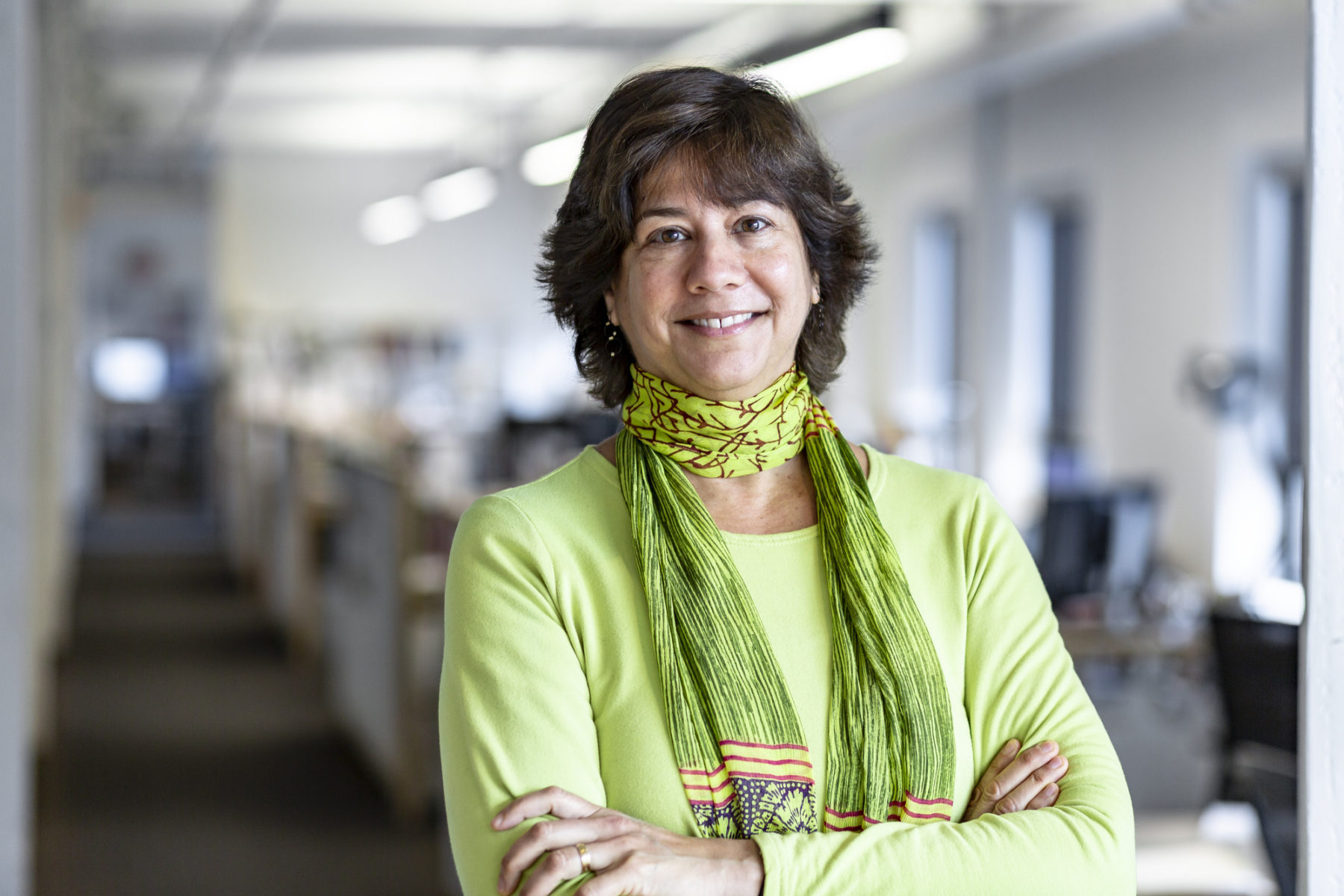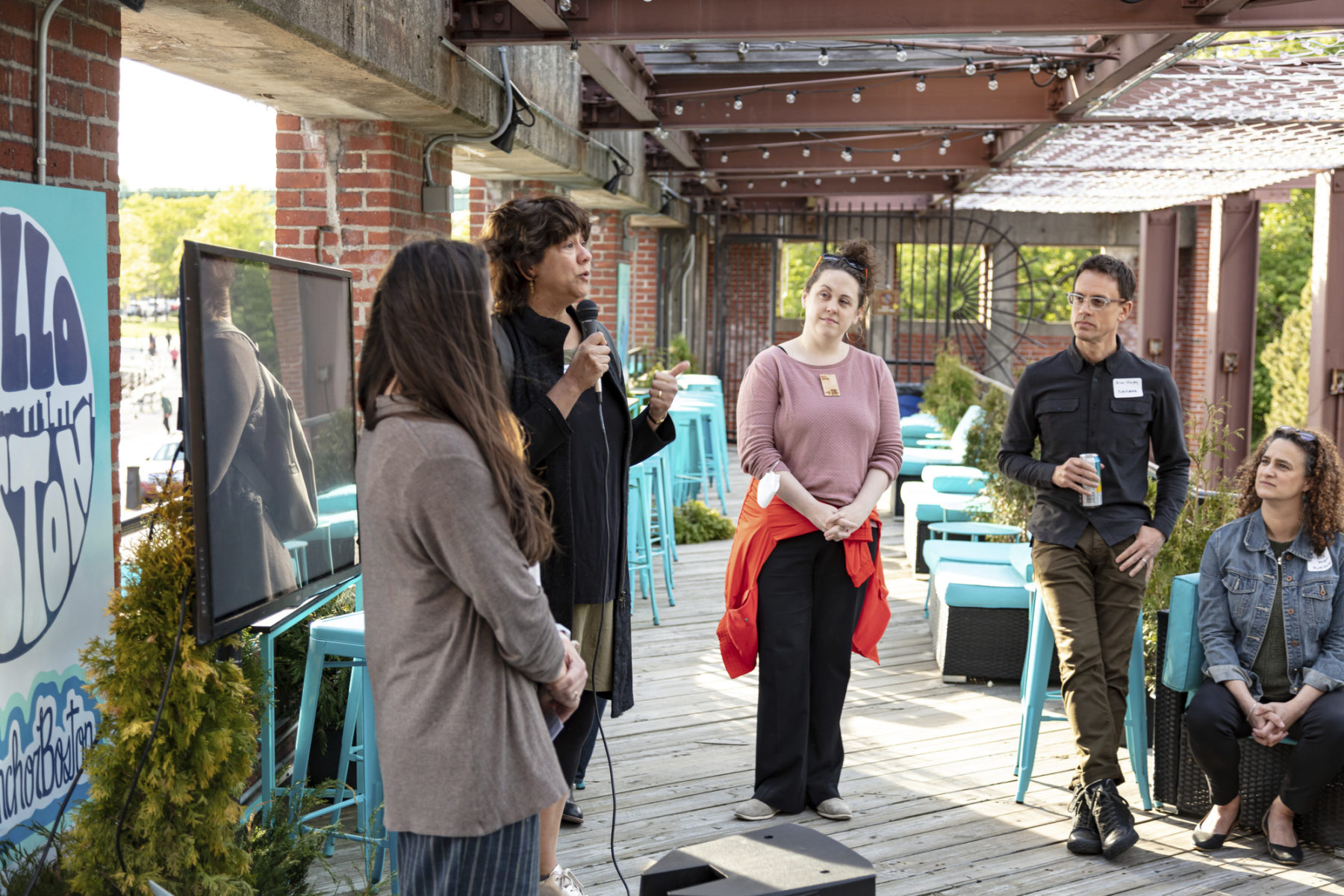Q&A with Tamar Warburg—Sasaki’s Sustainability Director
Learn what drives Sasaki's Sustainability Director in the work she does
 Sasaki
Sasaki

Tamar Warburg AIA, LEED AP BD+C, director of sustainability and resilience, has been promoted to associate principal.
Warburg works with Sasaki teams to develop sustainability and resilience goals for each project and access critical resources to reach those goals. She works across all Sasaki disciplines, on projects as varied as net-zero academic buildings, resilience and sustainability strategies for campus and corporate clients, and minimizing carbon emissions from buildings and landscape projects. Warburg directs Sasaki’s Sustainability Leaders, training individuals embedded in each project team responsible for project sustainability metrics and goals. In this era of climate change, she believes that every project is an opportunity to make a healthy and resilient contribution to our clients, our communities, and our planet.
“Tamar brings really unique insight because she’s a practicing architect who has touched on many different scales of work,” says Sasaki principal Victor Vizgaitis. “Too many times, designers can get tunnel vision, and the process becomes only about following checklists and hitting certain metrics—and I think that’s where the vision tends to fail. Tamar sees that sustainability is part of a bigger picture and should be interwoven with all aspects of a design.”
“But on a smaller scale,” Vizgaitis continues, “Tamar pushes to advance projects like the Carbon Conscience tool as mechanisms that our teams can use to see the real impacts of different design choices. She’s able to balance the big picture with the nitty-gritty technical side.”
Learn more about what drives Tamar in her work and in her new role as associate principal:
What are you excited about for the future of your role?
A: The thrilling part of my future as director of sustainability and resilience is the privilege of connecting with all disciplines within the firm. Don’t tell anyone, but I think I have the most exciting job at Sasaki, because I support an incredible range and diversity of work, and elevate our goals for sustainability and resilience to help our clients, communities, and the planet.
In the last three years I’ve learned that Sasaki has a secret sauce that defines the spirit of our design and planning work: interdisciplinary collaboration. That ability to learn from each other yields critical insights when we have planners, architects, and landscape architects working together to imagine the future.
Q Are there any particular projects you’re working on right now, or any moments in these projects that have really inspired you lately?
A: The projects that are the most inspiring are the ones that propose transformation, whether it’s reenvisioning a brownfield site as a mixed use urban district, redesigning an airport into a park,or finding ways to help a campus grow while achieving carbon neutrality. It’s imagining a future that’s very different from our present. One of the fabulous things about Sasaki’s design and planning practice is this idea of living in a future world. We have a superpower to imagine what that might be, work with communities and clients to give that shape and form, and then be able to design it and tell that story visually—and eventually build it—which is an incredibly thrilling ride.
"We have a superpower to imagine the future, work alongside communities and clients, and then design—and eventually build it—which is an incredibly thrilling ride.”
-Tamar Warburg

Warburg speaking at a JUST label event
Q: Victor shared that you helped spearhead the development of Sasaki’s Carbon Conscience app. Tell us more about why this app is different from other sustainability tools.
A: Carbon Conscience is an innovative tool because it allows so many sustainability decisions to actually be made in the earliest phases of the project. What’s the orientation of the building? What are the basic assumptions that underlie the site plan? What are the programming decisions that are being made, and how can we find the best and highest use for existing buildings before we build new? Now we have a tool to better understand embodied carbon emissions from materials that are used in the built environment.
Q: Is there another frontier that you’re excited to tackle? Another experiment? Another tool? What’s the next thing buzzing in the back of your head?
A: We’ve made tremendous progress in our architecture practice in the last few years. As for the next frontier, I believe we’ll focus in on community engagement and equity, because in order for us to think about not only how we can mitigate and prevent climate change, but how we adapt and survive and thrive despite climate change is going to come from working with user groups, with communities, with authorities having jurisdiction. And I think we are really honing our skills in that area.
The key that will help us make a difference in people’s lives is learning how to listen, and to take what we learned and translate that into implementation—in other words, translating planning into built work. We can make that part of our business model, because these are services that have value and can really help people.